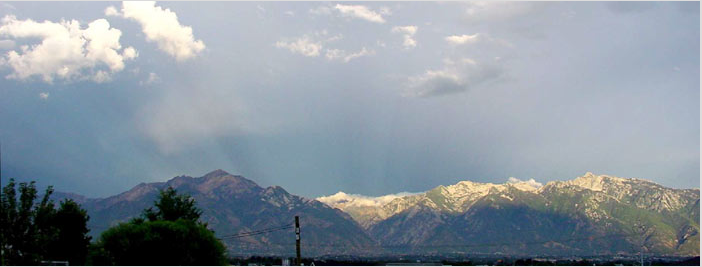Anti-crepuscular rays
Exploring Anti-Crepuscular Rays: Nature's Mysterious Light Show
Have you ever witnessed a captivating display of rays and shadows stretching across the sky, seemingly converging at a point opposite the setting or rising sun? These ethereal phenomena are known as anti-crepuscular rays, and they often leave observers in awe of nature's artistic prowess. In this article, we will delve into the fascinating world of anti-crepuscular rays, exploring their formation, characteristics, and the scientific principles behind their occurrence.
Unveiling the Enigma of Anti-Crepuscular Rays
Anti-crepuscular rays are a captivating atmospheric optical phenomenon that occurs when sunlight is scattered by suspended particles in the atmosphere, such as dust or water droplets. These rays appear to converge towards the antisolar point, which is the point in the sky opposite to the position of the sun. While they may seem like parallel beams of light, they are actually diverging due to the perspective from which we observe them.
The Role of Perspective
The convergence effect observed in anti-crepuscular rays is an optical illusion caused by our position as observers on Earth. Just as parallel train tracks appear to converge in the distance, the diverging rays of sunlight create the illusion of convergence when viewed from a specific vantage point. This perspective-dependent phenomenon adds to the mystique and allure of anti-crepuscular rays.
The Formation Process
Anti-crepuscular rays are primarily formed by the scattering of sunlight by atmospheric particles, similar to their more well-known counterparts, crepuscular rays. As sunlight passes through gaps in clouds or other obstructions on its path towards Earth's surface, it interacts with airborne particles. These particles scatter the sunlight, causing it to become visible as rays extending across the sky.
Atmospheric Conditions and Visual Effects
The visibility and intensity of anti-crepuscular rays are influenced by various atmospheric conditions. The presence of suspended particles, such as dust, water droplets, or even pollutants, plays a significant role in determining the clarity and prominence of these rays. Additionally, the angle of the sun relative to the observer's position affects the length and convergence point of the rays. As the sun approaches the horizon, anti-crepuscular rays become more pronounced and visually striking.
Chasing the Illusive Anti-Crepuscular Rays
To witness the captivating display of anti-crepuscular rays, one must be in the right place at the right time. These atmospheric phenomena are most commonly observed during sunrise or sunset when the angle of the sun creates optimal conditions for their formation. Finding an unobstructed view of the horizon and clear skies increases the chances of experiencing this awe-inspiring spectacle.
Capturing the Magic
Photographing anti-crepuscular rays can be a rewarding endeavor, allowing you to immortalize these transient moments of natural beauty. To capture these elusive rays effectively, consider using a wide-angle lens to encompass the vast expanse of the sky. Adjusting the exposure settings to balance the brightness of the rays with the surrounding scenery can help create stunning images that showcase the ethereal nature of anti-crepuscular rays.
Connecting Science and Wonder
The study of atmospheric optics allows us to unravel the scientific principles behind mesmerizing natural phenomena like anti-crepuscular rays. By understanding the scattering of sunlight and the role of perspective, we can appreciate the magic and beauty inherent in these optical illusions. Exploring the world of anti-crepuscular rays not only ignites our curiosity but also provides a deeper appreciation for the intricate workings of our atmosphere.
A Reminder of Nature's Artistry
Anti-crepuscular rays serve as a gentle reminder of nature's artistic prowess and its ability to create captivating displays in unexpected ways. These ethereal rays and shadows stretching across the sky remind us of the interconnectedness of all natural phenomena and the intricate dance between light, particles, and the atmosphere. So, next time you find yourself gazing at the sky during sunrise or sunset, keep an eye out for the elusive beauty of anti-crepuscular rays, and let yourself be captivated by the wonders of our natural world.

Subtle rays and shadows over the Wasatch Mountains, Utah. Imaged by Russell Urry on August 2, 2003. At left some shadows join the individual clouds forming them.
Image 2003 Russell J Uny, shown with permission.
Note: this article has been automatically converted from the old site and may not appear as intended. You can find the original article here.
Reference Atmospheric Optics
If you use any of the definitions, information, or data presented on Atmospheric Optics, please copy the link or reference below to properly credit us as the reference source. Thank you!
-
<a href="https://atoptics.co.uk/blog/anti-crepuscular-rays-9/">Anti-crepuscular rays</a>
-
"Anti-crepuscular rays". Atmospheric Optics. Accessed on November 26, 2024. https://atoptics.co.uk/blog/anti-crepuscular-rays-9/.
-
"Anti-crepuscular rays". Atmospheric Optics, https://atoptics.co.uk/blog/anti-crepuscular-rays-9/. Accessed 26 November, 2024
-
Anti-crepuscular rays. Atmospheric Optics. Retrieved from https://atoptics.co.uk/blog/anti-crepuscular-rays-9/.